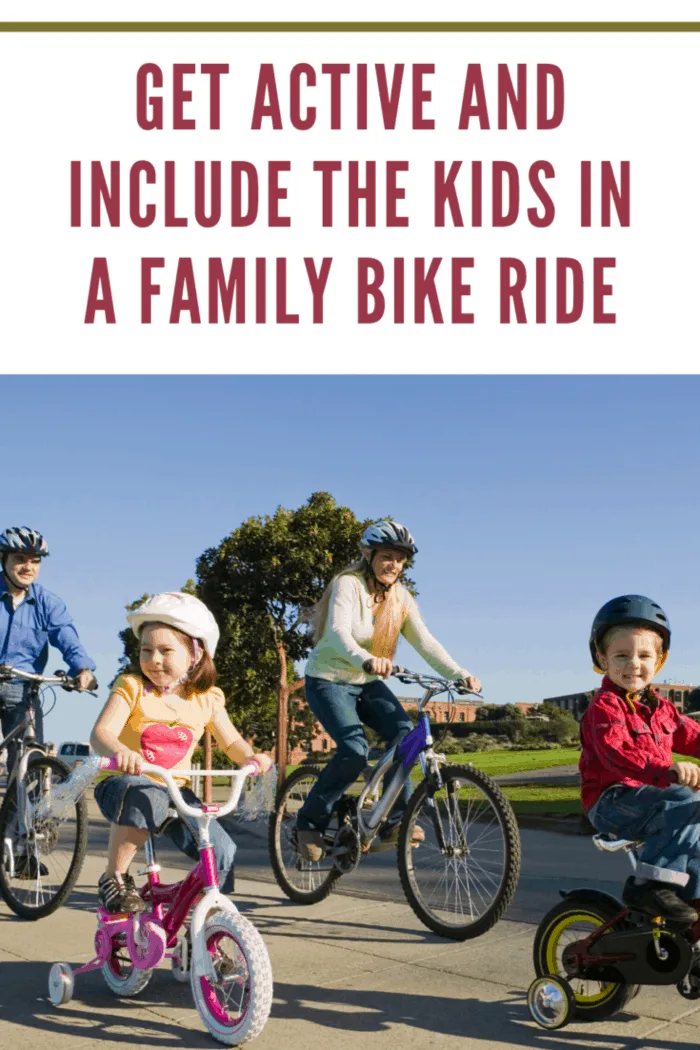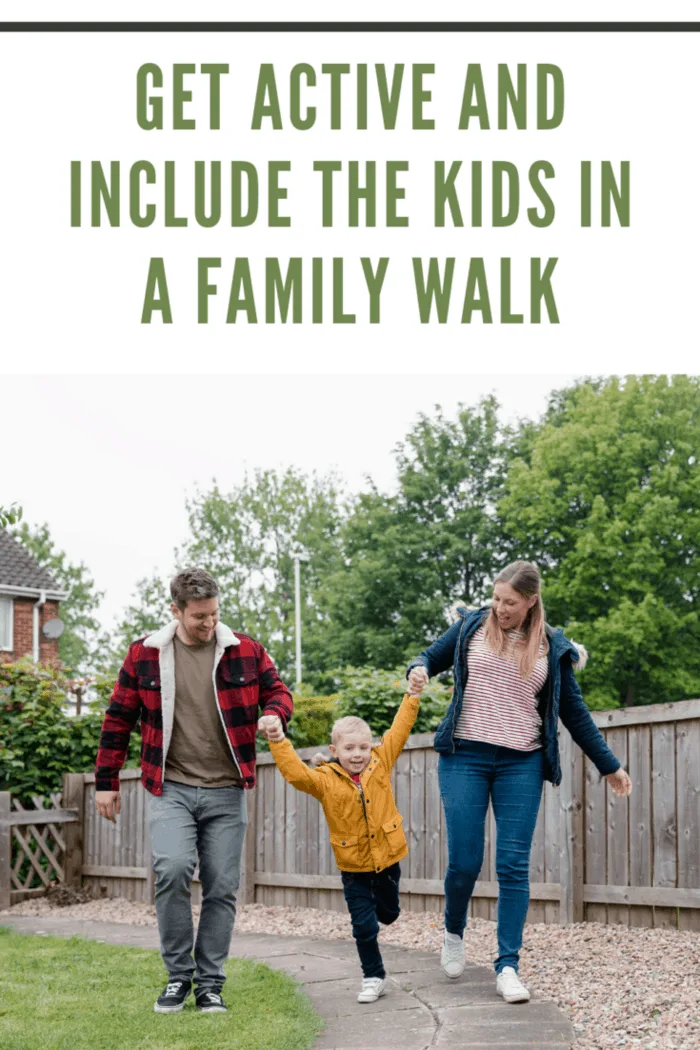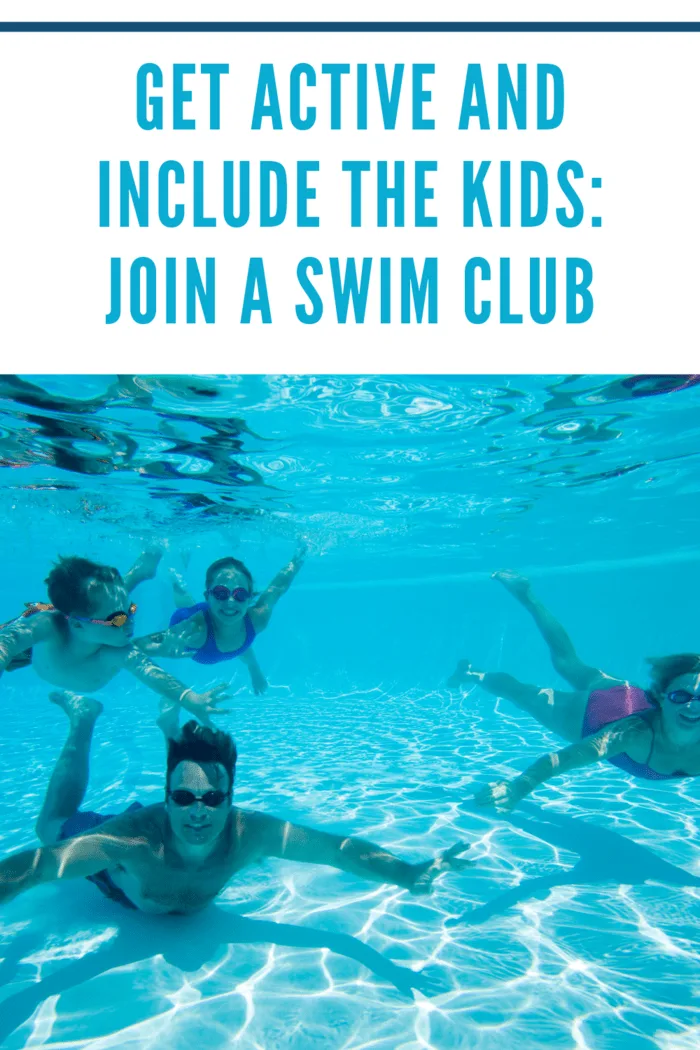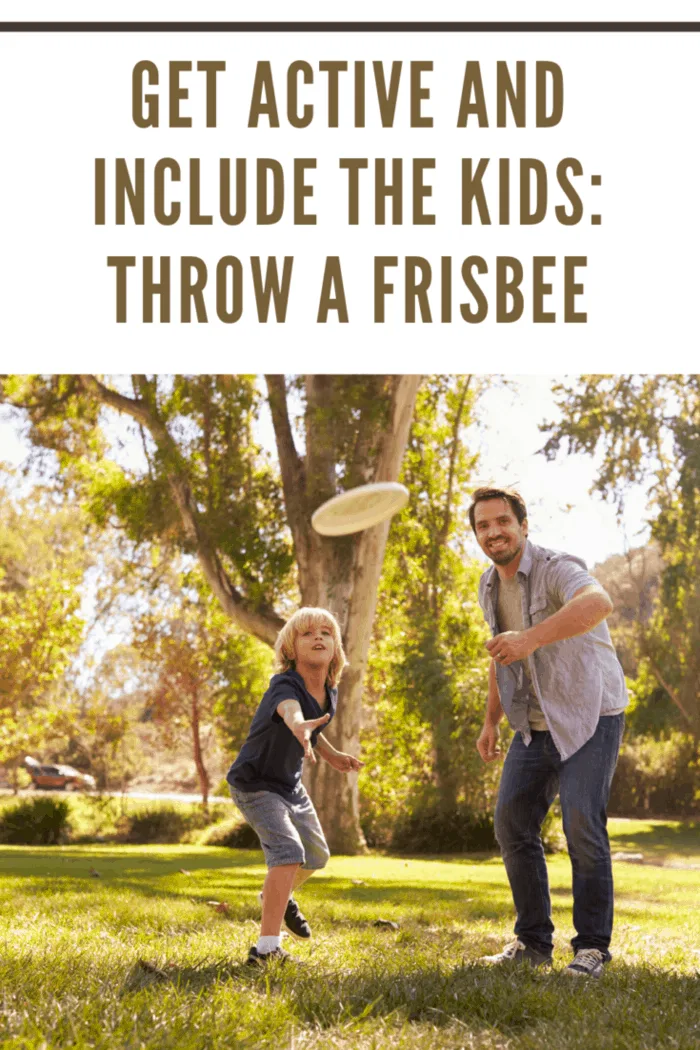Welcome to “Get Active: Fun for the Whole Family!” In today’s increasingly sedentary world, encouraging physical activity in children and adults is more important than ever. And what better way to do so than by involving the kids in our quest for an active and healthy lifestyle?
“Get Active” is designed to ignite a love for movement, fitness, and play among children and their families. We believe that engaging in physical activities promotes physical well-being and nurtures emotional, social, and cognitive development. By creating an enjoyable and inclusive environment, we aim to inspire a lifelong commitment to staying active and healthy.
Find diverse activities catering to children of all ages and abilities. There’s something for everyone, from energetic team sports like soccer, basketball, and tag to individual pursuits such as swimming, cycling, and dancing. Prioritize variety and fun, ensuring that each activity is both stimulating and rewarding, leaving children excited to participate and explore new ways to move their bodies.
But “Get Active” isn’t just about physical exertion—it’s about fostering a sense of togetherness and connection. We firmly believe that family involvement is key to building healthy habits that last a lifetime. Parents and caregivers can actively engage with their children, sharing laughter, bonding experiences, and memories that will be cherished for years to come.
So, whether you’re looking to discover a new sport, spend quality time with your family, or have fun and stay active, “Get Active” is here to support and inspire you. Together, let’s embark on a journey of movement, health, and happiness while instilling in our children a love for an active lifestyle that will shape their lives for years to come. Join us and let’s get active—because the benefits are multiplied when the whole family participates!
It’s time to Get Active and Include the Kids! For parents who want the very best for their kids, nothing is more important than paying attention to health and fitness. In a world filled with McDonald’s and video games, it’s up to parents to make sure that their children stay fit. A proper exercise regimen is one of the most crucial parts when it comes to getting into (and staying in) shape. Below, we’ve outlined some easy ways you and your children can work together. Remember to keep the emphasis on fun. Kids should consider these get-fit activities exciting ways to get out and have a good time. Instead of focusing on the activity like exercise, highlight the fun that you’ll have. This will encourage your kids to want to get out themselves.

5 Ways you can Get Active and Include the Kids:
A Family Bike Ride:
Cycling is a great way to get fit with your children. A pleasant ride through the countryside incorporates the outdoors into your workout. You could even look into purchasing a tandem bicycle so you can bicycle together. As added benefits, replacing driving with bicycling saves money and is good for the environment. It’s also important to make sure that everyone wears a helmet at all times, including the parents.
Riding a bike is not only a fantastic way for both kids and adults to get active but also a great opportunity for family bonding and exploration.
Here’s how riding a bike can involve the kids and promote an active lifestyle:
- Fun and Adventure: Riding a bike is an exhilarating experience that appeals to children’s sense of adventure. Exploring the neighborhood, parks, or nearby trails on a bike can turn an ordinary day into an exciting adventure. Kids can enjoy the thrill of the wind in their hair, the freedom of movement, and the joy of discovering new places alongside their parents or siblings.
- Physical Fitness: Cycling is a low-impact aerobic exercise that helps improve cardiovascular fitness, strengthens muscles, and enhances overall endurance. By including the kids in bike rides, you’re providing them with a fun way to develop their motor skills, balance, and coordination while simultaneously improving their physical fitness. Regular biking sessions can contribute to healthy growth and development in children.
- Building Confidence: Learning to ride a bike is a significant milestone for children. By involving them in this activity, you provide them with a sense of accomplishment and boost their self-confidence. Encourage and support them as they learn to balance, pedal, and steer, and watch as their confidence grows with each successful ride. This newfound confidence can extend beyond biking and positively impact other areas of their lives.
- Quality Family Time: Riding bikes together offers a unique opportunity for quality family time. It allows you to engage in shared experiences, create lasting memories, and strengthen the bond between family members. Whether it’s embarking on a leisurely ride through the park, planning a family bike picnic, or competing in friendly races, biking together promotes communication, laughter, and the joy of being active as a family unit.
- Environmental Awareness: Riding a bike is an eco-friendly mode of transportation that instills environmental consciousness in children. By choosing to bike instead of driving for short distances, you teach your kids about the importance of reducing carbon emissions and preserving the planet. This valuable lesson can inspire them to adopt sustainable habits and make environmentally responsible choices as they grow older.
Incorporating bike rides into your family routine not only helps kids stay active and develop healthy habits but also creates lasting memories and strengthens family bonds. So, dust off those bikes, grab your helmets, and embark on an adventure together – because riding a bike is an excellent way for the entire family to get active, have fun, and explore the world around them.

After-Dinner Walks:
A pleasant stroll after you eat is a great way to unwind from a long day at work and school. Studies show that a bit of exercise aids in the digestion of food. This is also a perfect opportunity to talk to your children about what’s going on in their lives.
After dinner walks provide an excellent opportunity for the whole family to get active, unwind, and spend quality time together.
Here’s how after-dinner walks can involve the kids and promote an active lifestyle:
- Digestion and Health Benefits: Taking a leisurely walk after dinner helps aid digestion by stimulating the muscles in the abdomen and promoting healthy digestion. It can also lower blood sugar levels, improve insulin sensitivity, and contribute to weight management. By involving the kids in these walks, you can instill healthy habits early on and help them understand the importance of staying active for overall well-being.
- Connect with Nature: After dinner walks allow you to step away from technology and connect with nature. Exploring the neighborhood, local parks, or nearby trails with your kids exposes them to the beauty of the natural world. They can observe and learn about different plants, animals, and the changing seasons. This connection with nature fosters curiosity, appreciation, and a sense of environmental stewardship.
- Family Bonding Time: After dinner walks provide an opportunity for uninterrupted family bonding. It’s a chance to engage in meaningful conversations, share stories, and strengthen relationships. Walking side by side with your kids, you create a safe space for open communication, where everyone can freely express themselves and enjoy each other’s company. These walks become cherished moments that build lasting memories.
- Mental and Emotional Well-being: Walking has proven benefits for mental and emotional well-being. It can reduce stress, anxiety, and depression while promoting relaxation and a positive mood. By including the kids in these walks, you give them an outlet to unwind, release energy, and improve their overall mental health. It’s a time to leave behind the pressures of the day and focus on enjoying the present moment together.
- Encouraging a Lifelong Habit: Establishing after dinner walks as a family routine helps children develop a lifelong habit of staying active. By making it a consistent part of their day, they learn that physical activity is not a chore but a natural and enjoyable part of life. As they grow older, they are more likely to prioritize their well-being and seek out opportunities for movement and exercise.
Remember to make these walks fun and engaging for the kids. You can play games like “I Spy,” create scavenger hunts, or listen to their favorite music or audio stories while walking. Encourage them to observe and share interesting things they discover along the way. By making it interactive and enjoyable, after dinner walks become an anticipated family activity.
So, lace up your walking shoes, invite the kids to join you, and embark on a post-dinner stroll. It’s a simple yet effective way to get active, unwind, and create meaningful connections with your loved ones.

Join a Swim Club:
The hot summer is a wonderful time to enjoy the cool water at your local swim club. You don’t even have to swim laps. While swimming is widely considered the best form of exercise, just walking through the water and playing around also burns calories.
Joining a swim club offers numerous benefits for both kids and adults, providing an excellent opportunity to get active, build skills, and foster a sense of community.
Here’s how joining a swim club can involve the kids and promote an active lifestyle:
- Full-Body Workout: Swimming is a low-impact, full-body workout that engages multiple muscle groups. Joining a swim club allows kids to participate in regular swim practices, improving their cardiovascular endurance, strength, and flexibility. Swimming helps develop strong core muscles, promotes healthy lung function, and enhances overall fitness levels. It’s a fun and effective way for kids to stay active and maintain a healthy weight.
- Skill Development: Swimming is both a life-saving skill and a competitive sport. Joining a swim club exposes kids to structured training and professional coaching, enabling them to develop proper swimming techniques and improve their performance. They can learn different strokes, refine their skills, and set personal goals. Regular practice and friendly competitions within the club encourage skill progression, self-discipline, and perseverance.
- Water Safety: Being part of a swim club ensures that kids receive essential water safety education. Coaches and instructors emphasize the importance of water safety rules, such as proper pool behavior, recognizing dangerous situations, and knowing how to respond in emergencies. Learning these skills can significantly reduce the risk of accidents and provide kids with the confidence and knowledge to enjoy water activities safely throughout their lives.
- Social Interaction and Teamwork: Joining a swim club exposes kids to a supportive and inclusive community. They have the opportunity to interact with peers who share similar interests, fostering new friendships and a sense of belonging. Participating in team events, relays, and competitions promotes teamwork, sportsmanship, and camaraderie. Being part of a swim club offers kids valuable social experiences, boosts self-esteem, and encourages a lifelong love for swimming and physical activity.
- Goal Setting and Achievement: Swim clubs provide a structured environment for kids to set and achieve personal goals. Whether it’s improving their swimming time, mastering a new stroke, or reaching specific milestones, working towards these objectives helps children develop focus, determination, and a sense of accomplishment. Regular feedback and recognition from coaches and teammates further enhance their motivation and self-confidence.
- Family Involvement: Joining a swim club often encourages family involvement. Parents can actively support their children by attending swim meets, cheering them on, and providing encouragement. It becomes a shared experience that strengthens family bonds and creates lasting memories. Additionally, some swim clubs offer family swim times or programs for parents who want to join in and swim alongside their children, further promoting an active lifestyle for the whole family.
By joining a swim club, kids can embrace the benefits of swimming as a lifelong activity. They develop essential skills, build strength and endurance, and enjoy the social aspects of being part of a team. So, consider diving into the world of swimming clubs and watch your children flourish in a supportive, active, and engaging environment.

Throwing a Frisbee:
Flinging a disc is easy to pick up, and it doesn’t take a ton of athleticism like some other pursuits. In fact, the worse you are, the more exercise you’ll get chasing after the Frisbee!
Throwing a frisbee is a fantastic way to get active and include the kids in a fun and engaging physical activity.
Here’s how throwing a frisbee can promote an active lifestyle and involve the kids:
- Cardiovascular Exercise: Throwing a frisbee involves running, jumping, and quick bursts of movement, making it a great cardiovascular exercise. As kids chase after the frisbee, they engage their muscles, increase their heart rate, and improve their endurance. It’s a fun and energizing way for kids to get their bodies moving and their hearts pumping.
- Hand-Eye Coordination: Throwing and catching a frisbee requires hand-eye coordination, precision, and timing. By practicing these skills, kids enhance their motor skills, balance, and spatial awareness. They learn to judge distances, make accurate throws, and anticipate the flight of the frisbee. This improvement in hand-eye coordination can have positive effects on other activities and sports they may participate in.
- Outdoor Exploration: Throwing a frisbee encourages outdoor play and exploration. It provides an opportunity for kids to enjoy fresh air, soak up vitamin D from the sun, and connect with nature. Whether it’s in a backyard, park, or beach, frisbee games allow kids to explore different environments, appreciate natural surroundings, and develop a sense of adventure.
- Social Interaction and Teamwork: Throwing a frisbee can be a social activity that promotes interaction and teamwork. Kids can play with their friends, siblings, or even parents, engaging in friendly competition and cooperative play. Frisbee games often involve passing the frisbee back and forth, encouraging communication, teamwork, and cooperation. It’s a great way for kids to bond, build friendships, and develop social skills.
- Balance and Agility: Throwing and catching a frisbee require agility, balance, and body control. As kids move to catch the frisbee, they practice balancing on one foot, changing direction, and adjusting their body position. These movements enhance their coordination and proprioception, contributing to overall physical development and athleticism.
- Imagination and Creativity: Throwing a frisbee allows for creativity and imaginative play. Kids can invent their own games, create challenges, and come up with unique throwing techniques. This freedom to explore and experiment nurtures their creativity and critical thinking skills, providing an outlet for self-expression and problem-solving.
- Inclusive for All Ages: One of the great advantages of throwing a frisbee is that individuals of all ages and abilities can enjoy it. Whether you have young children or teenagers, everyone can participate at their own level. The frisbee can be thrown gently for younger kids or with more intensity for older ones. It’s a versatile activity that can be tailored to suit each individual’s capabilities.
So, grab a frisbee, head outdoors, and let the fun begin! Throwing a frisbee gets kids moving, promotes physical fitness, and encourages social interaction. It’s a simple, low-cost activity that can provide hours of enjoyment for the whole family while fostering an active and healthy lifestyle.

Join a Sports League:
Plenty of communities have opportunities to join kickball, softball, or soccer teams with other parents and children. This can be a fantastic way for your kids to make new friends while staying active, and you’ll have the chance to enjoy family-friendly sports together. Look on the web for leagues that are forming near where you live. Many start right around the time that school gets out for the summer.
Joining a sports league is an excellent way to get active and involve the kids in a structured and competitive physical activity.
Here’s how joining a sports league can promote an active lifestyle and include the kids:
- Regular Physical Activity: Joining a sports league provides children with regular opportunities for physical activity. Whether it’s soccer, basketball, baseball, or any other sport, participating in league games and practices ensures consistent exercise throughout the season. Engaging in organized sports helps kids develop strength, endurance, and overall fitness, while also instilling healthy habits of regular exercise.
- Skill Development: Sports leagues offer professional coaching and structured training sessions that focus on skill development. Kids have the opportunity to learn and refine specific techniques, strategies, and rules of the sport. Through practice and game play, they improve their coordination, motor skills, and spatial awareness. Joining a sports league allows children to grow their skills and reach new levels of proficiency in their chosen sport.
- Teamwork and Collaboration: Sports leagues provide a platform for kids to learn valuable teamwork and collaboration skills. Being part of a team teaches them how to work together, communicate effectively, and support one another. They learn to rely on their teammates and understand the importance of collective effort to achieve shared goals. Sports leagues foster a sense of camaraderie and help kids develop important social skills.
- Goal Setting and Achievement: Sports leagues encourage kids to set personal and team goals. Whether it’s improving their individual performance, winning a match, or advancing to playoffs, goal setting becomes an integral part of the sports experience. Kids learn the value of setting targets, working hard, and experiencing the satisfaction of achieving their objectives. This process of setting and achieving goals builds self-confidence and a sense of accomplishment.
- Sportsmanship and Character Building: Participating in a sports league teaches kids about sportsmanship, fair play, and integrity. They learn to respect opponents, follow rules, and handle both victory and defeat graciously. Sports leagues provide opportunities for children to develop character traits such as discipline, perseverance, resilience, and respect for authority. These qualities extend beyond the field and positively impact various aspects of their lives.
- Social Interaction and Friendship: Joining a sports league offers kids a chance to meet and interact with peers who share similar interests. They build friendships, develop a sense of belonging, and form a support system within the team. Sports leagues often organize social events and team-building activities, fostering lasting friendships and a sense of community.
- Fun and Enjoyment: Above all, joining a sports league is about having fun and enjoying the game. It provides an outlet for kids to channel their energy, passion, and enthusiasm for a particular sport. Engaging in a sport they love within a supportive and competitive environment enhances their overall enjoyment and enthusiasm for physical activity.
By joining a sports league, kids can develop lifelong skills, build physical fitness, and experience the joy of being part of a team. It promotes an active lifestyle, nurtures character development, and fosters social connections. So, encourage your kids to explore their interests, join a sports league, and embrace the benefits of organized sports.
Final Thoughts
Whatever you do with your children, the most important thing is simply getting outside and staying active. A sedentary lifestyle can lead to disastrous consequences, including obesity, heart disease, and diabetes. For the sake of both you and your kids, get off the couch and stay as active as possible. Your body will thank you in the long run, and you’ll set the children up for a long life of good health.
Incorporating physical activity into our lives, especially for children, is crucial for overall health and well-being. Whether it’s through organized sports, outdoor play, family activities, or individual pursuits, finding ways to get active and involve the kids brings numerous benefits.
Physical activity not only improves physical fitness, but it also enhances cognitive function, promotes emotional well-being, and fosters social interaction and character development. It teaches valuable life skills such as teamwork, discipline, goal setting, and resilience. By involving the kids in active pursuits, we lay the foundation for a healthy and active lifestyle that can last a lifetime.
Remember, the key is to make physical activity enjoyable, inclusive, and age-appropriate. Encourage kids to explore different activities, support their interests, and celebrate their achievements along the way. Whether it’s throwing a frisbee, joining a sports league, going for after-dinner walks, riding bikes, or any other activity, the goal is to have fun, connect as a family, and create lasting memories.
So, let’s prioritize physical activity and make it a regular part of our lives. Embrace the joy of movement, encourage the kids to explore their interests, and lead by example. By promoting an active lifestyle and involving the kids, we can set them up for a future filled with health, happiness, and a lifelong love for being active.
We appreciate your subscription to Mommy’s Memorandum
